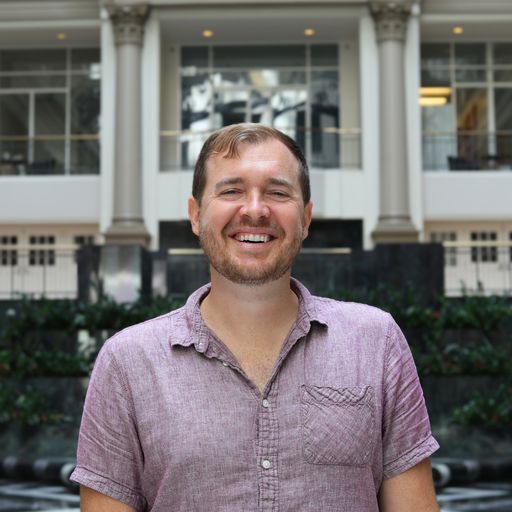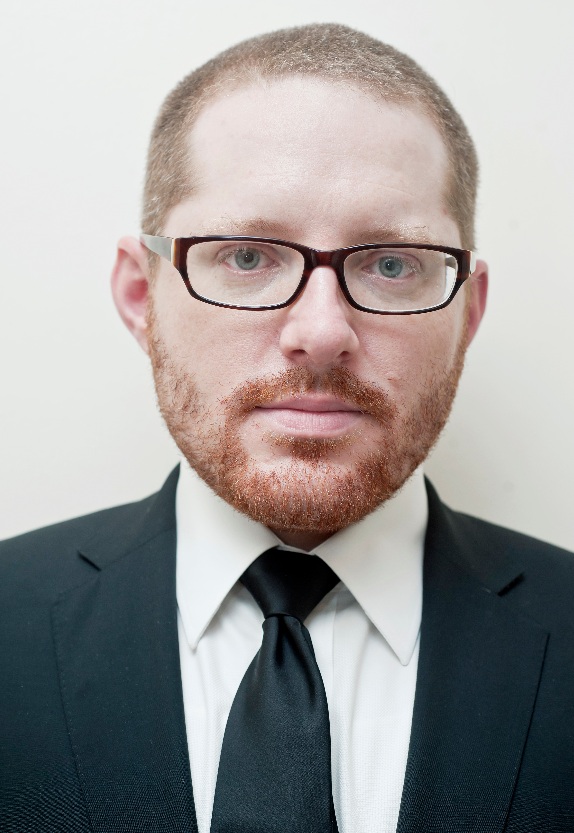Adam Butler has a fine corporate resume.
He has a vice president title with Wayne-based Bracket, the global strategy and technology firm that supports pharmaceutical clinical trials. Before that role with the company, which was formed just last year, Butler spent nearly a decade with one of the companies that merged to form Bracket.
Butler, who lives near Malcolm X Park in West Philly, had many roles there, climbed the corporate ladder and seems a good company spokesman. That’s what helps make his story so interesting.
In 1996, the Pittsburgh native dropped out of Temple University to form a web development company and ran away to San Francisco.
At a time when the industry was dominated by big business, he and his partner, who, together, formed Fahrenheit 450 (named, similarly to the novel, after the purported temperature that paper burns), did cutting edge web work for companies like Apple, Warner Brothers and a half dozen others that you know but he can’t technically take credit for, due to 15-year-old contractual obligations.
Still, it’s clear to say that Butler, 38, isn’t your average corporate vice president.
Below, we hear more about his path and how he may have helped make the Temple student newspaper one of the first publications in the world to go from print-only to online-only, if briefly.
As always, edited for length and clarity.
What do you do for Bracket?
I have been there nine years and there have had a lot of roles in that time. There are now 500 employees at Bracket. There were only 10 employees nine years ago. The work I do now is focused on scientific tools that support R&D, doing sales and marketing and product development.
What I do now is nothing like what I started.
What were you doing nine years ago?
I came to start in e-learning, creating electronic and multimedia tools to help people learn. We wanted to find ways to train clinicians and nurses to make sure they were evaluating patients appropriately, and to know they were doing R&D actively and effectively.
But before that you developed a reputation for launching development firm Fahrenheit 450. Tell us about that.
It was a milestone. I was still an undergrad, the genesis came in 1995 while at Temple [University]. I launched Fahreinheit 450 with another partner [named Michael Martin].
We had just finished a year internship with the Chronicle of Higher Education, and we were hired as interns to formally create a web presence for the Chronicle. They were selling data and IT services almost 10 years earlier, almost like Bloomberg. It was crude but wildly popular, and they wanted to convert that to the web. That was what everyone was talking about then, transitioning models online.
We built a tool for higher ed to access that data, and we built something modest, though ahead of its time, and I learned a whole lot about programming, and I started doing a lot of automation. I learned PERL on that project. [laughs].
And that was the start?
A friend of mine, who became my partner with Fahrenheit 450, and I got a few projects to transfer work onto the web, and we recognized this could be a paying gig. So we turned this into a lot of multimedia and interactive things.
For example [in 1995], we built a virtual reality tour of a publishing plant for a yearbook publisher — the tours were the most popular ask, but they couldn’t accommodate everyone. It was miserable to make but it was really cool, using Qucktime 3D and other tools, and once we were able to get through the raw materials, you could walk through the plant and see 3D objects and models and that led to one project to another and to another.
Really new ideas then.
How did the company develop its reputation?
We were forced to adapt. HTML as a commodity rapidly lost its value.
When we started, I was getting paid thousands of dollars to make HTML. By the time I relocated to San Francisco in 1997, that was a $20 an hour job. The other things that we had done — the automating, the authoring, PERL, we started creating databases to manage it all — was the stuff that was our niche, this database publishing.
…That was our reputation and that was our business.
We hear there are some very high profile projects you worked on.
The high profile stuff, well, most of it we were never supposed to market it, so I can’t say too many names, but I can describe the projects broadly.
OK, what are some of the biggest projects Fahrenheit 450 took on?
We did a really huge project for a [very well known] large, international Church network. They create an enormous amount of literature, and we built something that allowed them to suck up content they created in other programs and create a pamphlet or newspaper or magazine or brochure from it. In 1997, the only other systems that allowed that were things like mainframes that ran on archaic hardware that was impossible to get in and out of.
We also did work for a well known West Coast university… to do something similar, that had an interface to add content or could take stuff from Microsoft Word, which was still a pretty novel thing then, and have that parsed and placed automatically.
Perhaps most prominently, you did some early web work for Apple, correct?
We had a connection at Apple, and Apple at the time was evangelizing their technologies, trying to recoup some market share.
They had an agreement with a few companies that was tied to a big promotion where when James Bond started driving a BMW, and Apple would hire us to go do 3D models of these cars that would be available on the web. And 3D tours of cars were just not available anywhere else online then.
There were a couple other situations like that, where Apple knew we could do these things and use their tools, and they would find a third-party, a really big company, that they wanted to use their tools, and say we used Quicktime 3D to do this cool project. We had some really amazing experiences that way.
…We also did large projects for folks like Warner Brothers, who were evangelists about this innovation and so you can mention their name, but there are others, like a well-known European car maker that did cool work too but wanted it private [who did the work].
And this was all new even in the late 1990s?
These systems did exist already. Most newspapers used these big systems for millions and millions of dollars, but it required a whole army of staff. It was all very rigid and no customization. Anyone who used them despised them, particularity writers, and we were able to come in there to find easier, cheaper, more flexible options at a time when a lot of people just didn’t know that was possible.
For our second and third and fourth paying gigs, I was still an undergrad, and I ended up leaving Temple because I had so much paying work. … I never went back [to Temple]. My mother still hasn’t forgiven me I was 9 credits short.
But you felt you had to leave Philadelphia for San Francisco. Why?
At the end of 1996, that was where all the customers were, so we had to go to San Francisco if we wanted to do this seriously.
There were some cool things happening in New York and anything cool happening in Philly was going to New York. But the big interest was happening in San Francisco.
So why come back to Philly? You were from Pittsburgh.
We did it for a few years, and it was a lot of fun, but it was tiring and really hard and my coming back coincided with the end of a relationship.
In roughly 2000, I came back to Philly and started a record label and other projects, took a job with Bluestone for e-learning and multimedia learning.
Bluestone was an excellent company that got bought by HP [in October 2000] before disappearing. It was one of the really high-profile internet successes of Philadelphia, started in Mount Laurel by a few guys, including Mel Baiada, who came from places like RCA and defense contractors in South Jersey. They went public on their own in 1999 or so before I was there and it was a real high-profile company.
So there were some things starting to happen in Philly, and this was were my friends and my network really was from college. There was a feeling that it was a bubble by then, particularly in the minds of the smarter ones and particularly in San Francisco, and then by 2001 it was bursting, so I made out alright.
Before we let you go, we hear you have a great story about pushing your college newspaper to go online-only in the mid-1990s.
I did a lot of internships and learning out of the classroom and took time off, so I had a lot of perspective.
I started in 1991 and was studying film, but was always around newspapers. My mother ran a little tiny newspaper in Pittsburgh, where I grew up, that eventually got bought by Gannett, and so I loved visiting the work she did.
I did 50/50 film and journalism. That led me to the internship with the Chronicle, and that internship had me learn a lot, and when I came back I was managing editor of The Temple News in fall 1995. We were expected to pay for the printing entirely from ad revenue, and printing costs were skyrocketing, and it was the height of the mid-1990s print scare, and the student-run paper people and the ad sales people were undergrads and couldn’t do it.
The [now defunct] Northeast News Gleaner published the paper then and, for a while, were doing it for free because we couldn’t pay our bill, but it had to stop. We were trying to make print work — we were daily at that point — and we went to our faculty adviser to ask for more money, and they said you’ll have to close down the paper.
Instead, we decided to go on the web, and we launched in spring 1996 as online-only, no print at all. The Inquirer and Editor & Publisher and Wired and the New York Times were all running stories about our transition, being this trend piece of the future.
In the beginning of spring 1996, we just couldn’t afford to print, it was that simple. By the end of that semester of 1996, we launched as a weekly print product, but, yes, the Temple college newspaper was probably one of the earliest online-only publications.
We used to run this ridiculous house ad, where on the front page of the paper we’d push to the website, and on the back of the paper, we would would literally run a screen capture of the home page, showing what content people were missing.
…I guess things have changed.
Before you go...
Please consider supporting Technical.ly to keep our independent journalism strong. Unlike most business-focused media outlets, we don’t have a paywall. Instead, we count on your personal and organizational support.
Join our growing Slack community
Join 5,000 tech professionals and entrepreneurs in our community Slack today!





